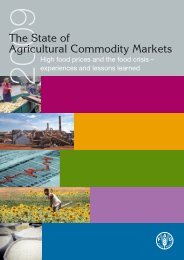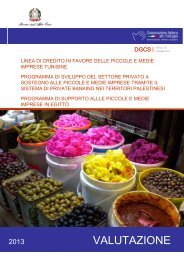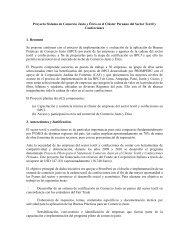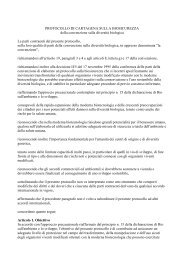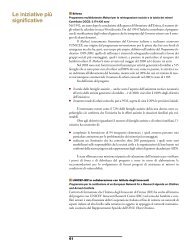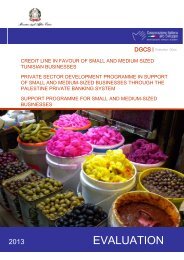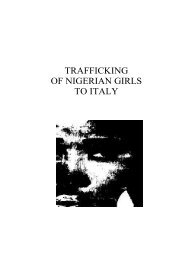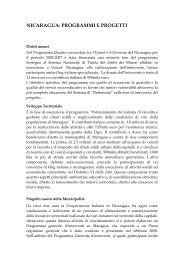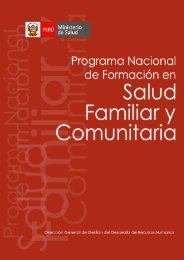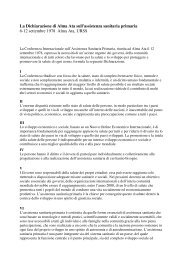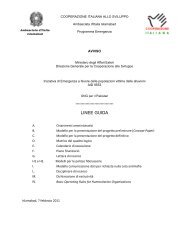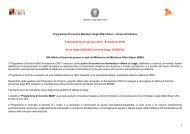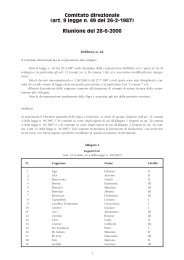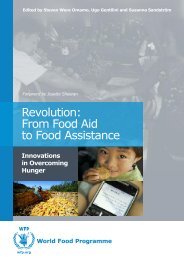FRONTESPIZIO - Cooperazione Italiana allo Sviluppo
FRONTESPIZIO - Cooperazione Italiana allo Sviluppo
FRONTESPIZIO - Cooperazione Italiana allo Sviluppo
Create successful ePaper yourself
Turn your PDF publications into a flip-book with our unique Google optimized e-Paper software.
7. HIV and skin: an operational research (O.R.) in Tigray region, Ethiopia 113which more than 60 million (85%) live in rural areas. The sex ratio (male tofemale) is approximately 1:1 with slight prevalence of females.The annual population growth rate is 2.7%. The percentage of populationaged 60+ is 4.6%.Administratively, Ethiopia is divided into 9 regional states and 2 administrativecouncils and further subdivided into zones and weredas. The country isa land of great topographical diversity of high rigged mountain, flat toppedplateaus, deep gorges, incised river valleys and rolling plains which are responsiblefor tropical, sub-tropical and temperate climatic conditions. Thisenvironmental mosaic marked the diversity of plant and animal life. Thecountry is a land not only of highly varied landscape, and hence flora andfauna, but also of a multiplicity of ethnic groupings with complex cultural diversity.Furthermore, the existing archaeological evidence suggests thatEthiopia is one of the few countries considered to be the cradles for the evolutionof mankind, a fact that is also a testimony to the great antiquity anddiversity of cultural values. This cultural diversity is the result of a long processof interaction and contact among the people in the country and withthat elsewhere, mainly across the red sea. It is believed that this interaction ofpeoples was primarily responsible for the introduction of written languagebeginning from the era of the ancient Axumite kingdom.Unfortunately, recurrent droughts that often lead by epidemics of cholera, typhus,dysentery, the current HIV/AIDS epidemics and the opportunistic infections,poverty of the majority of the population as embodied by malnutrition,illiteracy, and neglected surroundings have always favoured the propagationand dissemination of diseases, migration, family breakage and streetlife etc. in the country. In this desolation the rural community is the conspicuousvulnerable groups. Ethiopia has extremely poor health status relative toother low-income countries (largely attributable to potentially preventableinfectious diseases and nutritional deficiencies) and a high rate of populationgrowth. Widespread poverty along with general low income levels of the vastmajority of the population, low education levels (especially among women),inadequate access to clean water and sanitation facilities, and poor access tohealth services have also contributed to the burden of ill health.The low level of economic development places severe strains on the healthsector, and increases the importance of good health at the same time. Thehealth sector is called upon to provide greater services for persons in poorhealth, but with little resources. At the same time, economic conditions ofthe country can be improved by improving the productivity of its population.



